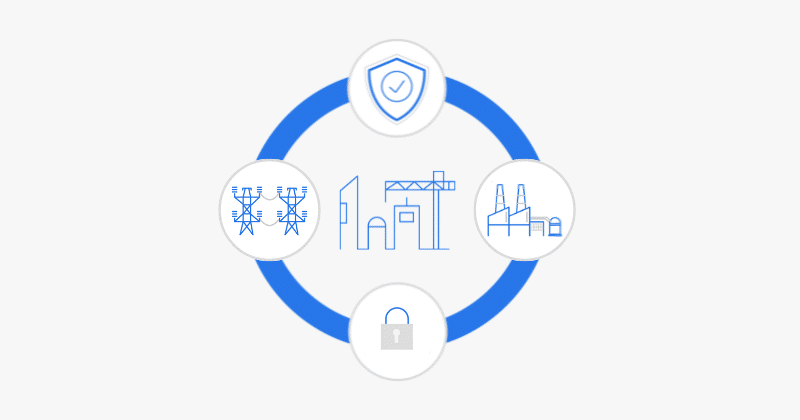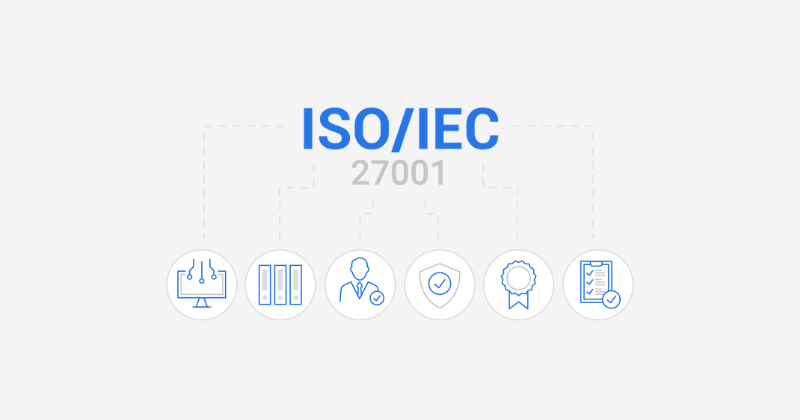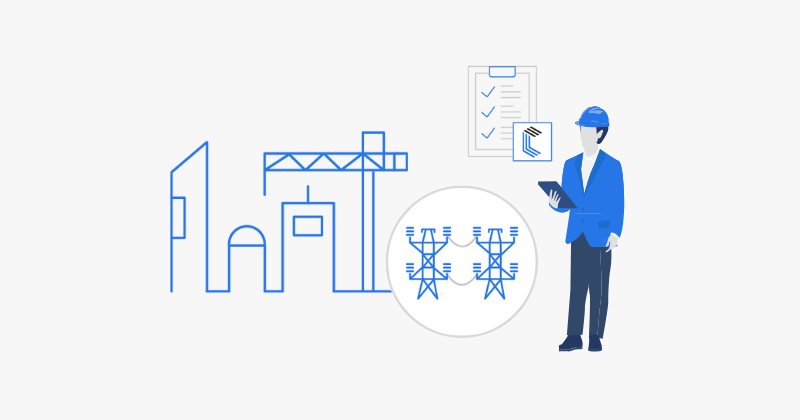Hey everyone, let’s talk about something that keeps me up at night – the unseen risks lurking where our physical world meets the digital. If you’re involved in critical infrastructure, manufacturing, energy, or really any industry that uses industrial control systems (ICS) or operational technology OT Security, you need to pay attention.
You see, the lines between the IT world we’re all familiar with (emails, laptops, data centers) and the OT world (the stuff that controls factories, power grids, water systems, you name it) are blurring faster than ever. On one hand, this convergence is driving incredible efficiency and innovation. But from a security perspective? Well, it’s like taking your super-secure fortress and suddenly building a bunch of new doors that lead directly to the internet’s Wild West.
And here’s the alarming bit: a whole lot of those critical OT “doors” are showing up exposed to the public internet. I’ve seen the data, and frankly, it’s a wake-up call. It raises a crucial, and maybe uncomfortable, question for many organizations: OT security: Are your exposed devices safe?
Having spent over 20 years helping organizations navigate the complex world of IT and cybersecurity, focusing on these critical systems feels more important now than ever. Understanding why this exposure is happening and what it means for your operations is the first, crucial step towards building the defenses needed to keep the lights on and the wheels turning safely.
The Unsettling Truth About Exposed OT Devices
Numbers don’t lie, and the recent data from reports like the one by Palo Alto Networks Cortex Xpanse paints a stark picture. In 2023 alone, they spotted roughly 46.2 million observations of OT devices just sitting there, publicly exposed to the internet. We’re talking over 1.25 million unique IP addresses and millions of device fingerprints tied to systems like SCADA and building controls.
Think about that for a second. This threat isn’t abstract it exposes a substantial number of industrial systems that control physical processes to direct online access from virtually anywhere. It’s like someone leaving the keys to your sensitive equipment lying around in Times Square.
Now, security teams might explain the rise in these numbers by saying that improved detection methods helped them find threats that already existed. But the fact remains, once you can see them, the bad guys can too. And while global distribution varies, the widespread exposure creates a massive, attractive target for anyone with malicious intent, from ransomware gangs to nation-state actors.
Why Letting OT Devices Hang Out Online is a Disaster Waiting to Happen
Unlike IT breaches (stolen data, downtime), a successful cyberattack on an OT system can have terrifying real-world consequences: operational shutdowns, equipment damage, environmental releases, or risks to human safety.
These devices are problematic and difficult to manage, it’s a mix of factors inherent to the OT world:
Legacy Tech is Everywhere: Many OT systems are decades old, built before internet connectivity was a concern. Updating or patching them is complex, costly, requires downtime, and vendors may no longer exist, leaving known vulnerabilities open, sometimes for years.
Network: A major issue is improper network separation. If organizations fail to isolate internet-facing devices from critical internal OT networks, they create a direct path for attackers. Basic configuration errors, like using outdated protocols, create significant security gaps.
An accidental human error: Let’s be honest, not every exposure is malicious. Often, it’s accidental. Someone configuring a device might check the wrong box, leave a port open, or enable a remote access feature without realizing the security implications. Human error is a persistent factor in breaches.
Convenience Over Security: Sometimes, that direct connection is put in place for “ease of access” for remote maintenance or vendors. While things like jump hosts and VPNs are the secure way to do this, shortcuts happen. Perceived convenience shouldn’t trump security, but it sometimes does.
“Password” isn’t a Password: Many devices come out of the box with default usernames and passwords (“admin”/”password,” anyone?). If these aren’t changed immediately, automated scanners on the internet can find and compromise them in minutes. It’s shocking how common this still is.
Unpatched Even If Not Exposed: Even if a device isn’t directly internet-facing, if it’s vulnerable and accessible from another system that is exposed (or gets compromised via phishing), it’s still a huge risk.
What Do the Bad Guys Do With This Access?
Threat actors are actively scouring the internet for these exposed OT systems. Their primary goal for initial access? Exploiting known vulnerabilities, especially in internet-facing services like web panels, firewalls, or VPNs.
And here’s the kicker that speaks volumes about the state of some OT systems: a massive percentage of successful attacks leverage vulnerabilities (CVEs) that are years old – sometimes 6-10 years, even over 20! This isn’t sophisticated zero-day stuff; it’s attackers picking the lowest-hanging fruit because it’s still there, ripe for the taking, due to the challenges of patching in OT environments.
Once they’re inside, malware comes into play – Trojans, ransomware, and sadly, a lot of “unknown” stuff we’re still analyzing. They also use tactics we see in IT attacks, like lateral movement, trying to find the most critical systems to control or disrupt. Certain network ports seem to be frequent targets, likely because they’re associated with common OT protocols or services.
Who’s Most at Risk? (Hint: It Might Be You)
While OT security affects everyone, some industries are sitting ducks if their defenses aren’t strong. Think manufacturing, energy, retail, government, hospitality, and finance.
Why these sectors? Manufacturing, for example, is often a complex web of interconnected machines and systems, often running on legacy gear that’s tough to update. Their critical nature makes them prime targets for financial extortion (ransomware) or even state-sponsored attacks aiming for disruption or espionage. Poor Posture and Vulnerability Management, along with weak network segmentation, makes it easier for attackers to get a foothold and move around undetected. If you’re in one of these sectors, you absolutely need tailored security measures.
Beyond the Tech: The Human Side and the Supply Chain
Cybersecurity isn’t just about blinking boxes and firewalls. It’s profoundly human. And guess what? The bad guys know this.
Social Engineering Still Works, Sadly: Phishing emails, convincing fake messages, even new tricks like “prompt bombing” (where attackers barrage your phone with multi-factor authentication requests hoping you’ll eventually hit ‘approve’ just to make it stop) are incredibly effective ways to get initial access. Why build a sophisticated exploit if you can just trick someone into clicking a link or giving up credentials? Robust, ongoing security awareness training isn’t a checkbox; it’s a vital layer of defense. Help your people spot the traps!
Simple Errors Cause Big Problems: Sometimes, it’s not a hack; it’s just a mistake. An employee accidentally sending sensitive information to the wrong person, leaving a database exposed on the internet during maintenance, or misconfiguring a firewall rule. Clear procedures, proper training, and automated checks where possible are essential to prevent these “oops” moments from becoming breaches.
Trust But Verify (Your Supply Chain): We rely on so many vendors and third parties today – for software, hardware, maintenance. A compromise anywhere in that supply chain can introduce backdoors or malware into your trusted systems. Remember incidents involving compromised software libraries or updates? That’s supply chain risk in action. You must scrutinize your suppliers’ security practices and have a plan for what happens if one of them gets hit.
The Attackers Aren’t Standing Still: Evolving Techniques
While exploiting old vulnerabilities is common, the more sophisticated adversaries are using techniques that are harder to spot:
“Living Off The Land” and Hiding in the Cloud: Instead of dropping obvious malware, attackers are increasingly using tools already present on your systems (“Living Off The Land” – LOTL) and hiding their communications in plain sight using legitimate cloud services. They might control compromised systems by sending disguised messages over platforms like Slack or Telegram, or use cloud storage services to move stolen data or stage their tools. Your standard security tools might miss this because the activity looks “normal.”
Stolen Credentials Are an Easy Button: Thanks to infostealer malware and breaches everywhere, stolen login details are dirt cheap on the dark web. Attackers buy these credentials and just log in, bypassing perimeter defenses entirely. This highlights the risk of unmanaged personal devices (BYOD) and the critical need for strong identity and access management across all your systems, IT and OT.
Ransomware Gets Sneakier, Extortion Gets Nastier: Ransomware is evolving. “Ransomware-as-a-Service” makes it easy for almost anyone to launch attacks. And some groups are moving beyond just encrypting data; they’re stealing it first and threatening to release it, sometimes even without encrypting anything at all (pure data extortion). They might even target the same victim multiple times or sell stolen data on criminal forums. This means you need rock-solid backups and a well-rehearsed incident response plan that covers extortion scenarios.
Okay, So What Do We Do About It? Actionable Steps
Addressing risks from exposed OT devices and internal vulnerabilities requires a strategic, layered approach, focusing primarily on network security as the starting point:
Build Walls, Not Just Fences: Your industrial network must be strictly separated (logically, ideally physically) from external networks like corporate IT and the public internet. No direct connections. Implement a Demilitarized Zone (DMZ) between OT and IT, protected by strong firewalls, to act as a secure buffer for all essential communications, including remote access.
Segment Your Castle: Segment your internal OT environment into smaller zones or “cells” (e.g., by process or function). This is crucial to contain breaches within one segment, preventing attackers from easily moving laterally to critical systems. Strictly control traffic flow between these segments.
Secure Remote Access: If remote access is needed (e.g., for maintenance), implement it securely using strong multi-factor authentication, secure VPN tunnels, and dedicated “jump hosts.” Jump hosts act as secured guard stations where access is strictly controlled, provisioned, and logged. Consider keeping OT authentication separate from corporate IT.
Patch or Compensate: While patching OT is complex (vendor coordination, downtime), it’s non-negotiable where feasible and should be operationalized for legacy systems. If patching is impossible, critical compensating controls must be in place, such as network segmentation, intrusion detection, and strict access controls.
Monitor Like a Hawk: Implement systems to continuously monitor network traffic and device behavior within OT. Anomalies – like unexpected connections, strange data transfers, or unusual commands – are early indicators of malicious activity. Get real-time alerts to enable quick response.
Train Your People: Reinforce cybersecurity awareness for everyone, particularly those working directly with or near OT systems. They are a first line of defense against common vectors like phishing or accidental misconfigurations. Build a culture where suspicious activity is understood and reported.
You Can’t Protect What You Don’t Know You Have. Period.
This might sound basic, but it’s foundational. Do you have a complete, accurate, up-to-date inventory of every single device on your OT network? Not just the big PLCs, but every switch, every sensor, every workstation, every single piece of equipment?
Know Your Assets: Get granular. What is it? Who made it? What model? What software versions are running?
Know Its Exposure: Where is it connected? Is it ever accessible from the internet or less-trusted networks?
Monitor That Inventory: This isn’t a one-time project. Your inventory needs to be a living document, constantly updated and integrated with your security monitoring tools.
Connect It to Threats: Link your asset list to vulnerability databases and threat intelligence feeds. Understand which of your specific devices have known vulnerabilities attackers are actively exploiting.
Automate Alerts: Set up alerts if a device’s connectivity changes, if suspicious activity is seen on a specific asset, or if a new, critical vulnerability is identified that affects something on your network.
Understand the Enemy, Assess Your Defenses
Being threat-informed is key. Study the techniques and tactics attackers use against OT systems (frameworks like MITRE ATT&CK for ICS are invaluable here). Knowing how they operate helps you prioritize your defenses.
And importantly, get objective eyes on your environment. Regularly perform security assessments and audits specifically tailored to your OT systems. This isn’t about finding blame; it’s about identifying gaps before the bad guys do. It helps you understand your true attack surface and prioritize fixes based on actual risk, not just guesswork.
The Bottom Line: Proactive is Non-Negotiable
So, are your exposed devices safe? The data and the current threat landscape suggest that if you’re not actively addressing this problem, the answer is likely not safe enough. The widespread exposure of OT devices, combined with the persistence of old vulnerabilities and increasingly sophisticated attack techniques, poses a significant risk to critical operations worldwide.
Adopting a proactive, layered security approach focusing on network separation, secure remote access, robust vulnerability management (as challenging as it is), maintaining a meticulous asset inventory, continuous monitoring, and frankly, building a stronger cybersecurity culture that empowers people – these aren’t optional nice-to-haves anymore. They are fundamental necessities.
The journey to a resilient OT security posture starts with that crucial first step: a thorough assessment of your current state and a clear, actionable plan based on hard data and intelligence.







